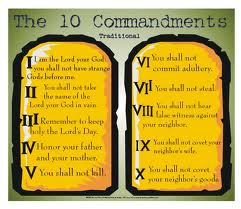The Strange Eschatology of William Miller and the Seventh-day Adventists

The Seventh-day Adventist denomination grew out of more than just the normal confusion that is inherent to Protestantism and has been for 500 years and counting. It was born out of a 19th century American Protestantism imbued with an extraordinary apocalyptic fervor. It consisted of Baptists, Methodists, Presbyterians, Episcopalians and more, with a Baptist Minister named William Miller eventually taking a quasi-leadership role.
It would be in the midst of the apocalyptic excitement that William Miller would claim to have discovered four key principles to understanding the Book of Daniel that, he claimed, unlocked the door to understanding everything concerning the coming of the Lord in Scripture, whether in Daniel or elsewhere. And these keys as well as conclusions reached from them would be adopted by both Ellen White and the SDA denomination in its formal statement of Faith: Seventh-day Adventists Believe: A Biblical Exposition of 27 Fundamental Doctrines, published in 1988 by the General Conference of Seventh-day Adventists, and updated to 28 doctrines in 2005 (they added #11, “Growing in Christ”).
First Principle: In biblical prophecy, a day always means a year. And not just when the Scriptures speak of “seventy weeks of years” like we see in Daniel 9:24, mind you, but always. This can be found in “Fundamental Truth #4” in Fundamental Doctrines.
The problems with this principle of interpretation are manifold. But for now, we can leave it with the simple fact that the Bible nowhere teaches it. That should be decisive for “sola Scriptura” Christians, don’t you think?
Second Principle: Found in Fundamental Doctrines #23 (24, in the new edition), this second key begins with the text of Daniel 9:24-26:
“Seventy weeks of years are decreed concerning your people and your holy city, to finish the transgression, to put an end to sin, and to atone for iniquity, to bring in everlasting righteousness, to seal both vision and prophet, and to anoint a most holy place.
Know therefore and understand that from the going forth of the word to restore and build Jerusalem to the coming of an anointed one, a prince, there shall be seven weeks. Then for sixty-two weeks it shall be built again with squares and moat, but in a troubled time.
And after the sixty-two weeks, an anointed one shall be cut off, and shall have nothing; and the people of the prince who is to come shall destroy the city and the sanctuary. Its end shall come with a flood, and to the end there shall be war; desolations are decreed.
Now, remember this line from verse 26 when we get to principle #4 below, which says, in effect, after the 490 years, “… an anointed one shall be cut off.” Whether that refers to Onias the High Priest, or Jesus, the Messiah, there is disagreement among Christians. But wait until you get a load of what the SDA’s have done with it. But for now, just note that Miller and the SDA claim that these “seventy weeks of years,” or 490 years, began with a declaration represented by the words, “from the going forth of the word to restore and build Jerusalem” that they allege was made by King Artaxerxes I commanding that the Jews be allowed and funded to rebuild the Temple and city of Jerusalem in Ezra 7:11-26. This prophesy would then end with the coming of the Lord 2,000 years ago. And that decree, Miller says, occurred in 457 BC. If you do the math: 457 B.C. + 490 years = A.D. 34.
Sounds good, eh?
Mr. Miller, We Have Some Problems
Miller’s first presupposition involved in this “second principle” is demonstrably false for a couple reasons beginning with the fact that the Book of Ezra gives us a definite timeline that excludes it as a possibility.
Early Christian writer, Sulpitius Severus, writing ca. AD 400 (Sacred History, Bk. II, Ch. 9-12), is most helpful here. He points out what is quite obvious in Scripture, but missed by Miller and the SDA, that it was Artaxerxes II that gave the order to rebuild the city of Jerusalem in Ezra 7:11-26, and in ca. 400 B.C. not Artaxerxes I and in 457 B.C.
This is a problem! So, who is right?
The Historical Backdrop
All you have to do is go through the Book of Ezra and you discover a clear timeline. But in order to demonstrate this we have to know what historians generally agree upon from both the study of Scripture itself and the study of various histories of the Persian Kings, and that is, the timeline of the Jewish Kings. For example, if you compare a very scholarly article from Henry Englander, found in The Journal of Jewish Lore and Philosophy, published by Hebrew Union College – Jewish Institute of Religion, “Problems of Chronology in the Persian Period of Jewish History,” (Vol. 1, No. 1, Jan. 1919), pp. 83-103, to The New Catholic Encyclopedia, “Persia,” (Vol. 11, 1967), p. 157, you get very close to the same dates. The same, at least, for the kings mentioned in Scripture. There pretty substantial disagreement over the Persian kings in general, but for the Persian Kings mentioned in Scripture they are almost the same, just disagreeing by a few years here or there. There are no substantial differences.
I am going to use The New Catholic Encyclopedia here as we establish a timeline, and I will bold only the Persian kings mentioned in Scripture:
559-530 BC – Cyrus II (the Great) He issued the famous “decree” of Ezra 1 (see Isaiah 45:1, we will come back to this)
530-522 – Cambyses II
522 – Smerdis
522-486 – Darius I
486-465 – Xerxes I
465-424 – Artaxerxes I
424 – Xerxes II
423-404 – Darius II
404-359 – Artaxerxes II
359-338 – Artaxerxes III
338-336 – Arses
336-330 – Darius III
To get a clear picture of the timeline here we must begin in Ezra 1 where God stirred the heart of Cyrus the Great—after having conquered Babylon and the whole known world at the time—to empty the treasures of Nebuchadnezzar and bring them to Jerusalem so that the Jewish people could rebuild the temple (and the city) that the Babylonians had destroyed. This is why Cyrus is referred to by God himself as “my anointed” in Isaiah 45:1. Ezra 1 says “in the first year” of his reign, but this probably refers to “the first year” after he had conquered Babylon. We have good reason to believe from Josephus that this occurred in 539 B.C., which would be the twentieth year of his reign. Ezra chapters 2-3 then talk about the building that begins and continues for years. It was an enormous task. First, you had to re-establish the priesthood, ensure the genealogies were right, etc.
But after years of endeavor, problems arose and the people already living there including some from the Northern tribes (that is, not members of the tribes of Judah and Benjamin—the Southern Kingdom—but from the other ten tribes) began to cause trouble and impede Judah from building from the time of Cyrus until Darius I, according to Ezra 4:4-5. Then, in verses 6-7, Ezra says this continues during the reigns of “Ahasuerus” or “Xerxes” (Greek name), and then during the reign of “Artaxerxes [I],” according to Ezra 4:7. Then, during the reign of “Artaxerxes [I]” (had to be the first, as we will see), the people who were against Judah wrote letters to the king telling him he should halt the Jews from completing the task. They tell him to search the archives and know that this people will be nothing but trouble if he were to let them finish the work and re-establish themselves. Artaxerxes then orders a halt to the building that would last, Ezra 4:24 says, “Until the second year of the reign of Darius.” Now, this had to be Darius II because Daniel 9:1 refers to his same “Darius” as “the son of Xerxes.” There is no “Xerxes” (or “Artaxerxes,” for that matter) before Darius I, but there is one before Darius II! This can’t be Darius III because he comes much, much later (see above timeline). But most importantly, in order for Miller’s prophecy to be true, the temple would have had to have been finished during the reign of Darius I, which is impossible because the building was clearly halted until the reign of Darius II.
Oops!
Now moving forward to Ezra 5 we see the prophets Haggai and Zechariah stirring up the people to begin building again. “We must obey God, rather than men” was the essence of their message.
And then, as you might imagine, word gets back to government officials who come to them and ask them who gave them authority to build. They respond with their trump card: “Cyrus…!” And then a letter is sent to Darius II who checks the archives and discovers Cyrus the Great did, in fact, order this so he issues a decree (in Ezra 6) declaring it to be the death penalty for anyone who would attempt to “altar this edict” (Ezra 6:11). He even opened up the royal treasuries of Persia so that the work could be assured to be finished. And Ezra 6:15 says they finished the building of the temple “during the reign of King Darius (II)”.
Then, in Ezra 7, which begins with “Now after this…” After what? After the building of the temple during the reign of Darius II, we see another Artaxerxes (II) issuing the decree Miller refers to in support of the Jews. In short this would be the Artaxerxes who would aid in completing everything with regard to the temple that was left, including paying for the animals for sacrifices, all of the golden vessels as well as rebuilding the wall and the city with Nehemiah, would marry Esther, and would see to it that the decree of Cyrus would come to complete fruition.
So what does this mean for William Miller’s second essential principle? To say Artaxerxes I issued the edict, mentioned in Daniel 9:25: “From the going forth of the word to restore and build Jerusalem to the coming of an anointed one…” is unbiblical. The only edict we have from Artaxerxes I was to “halt” the building of the temple!
This fundamental error began with William Miller, but then Ellen White conveniently confirmed it by “prophecy,” resulting in this false teaching making its way into official SDA belief where it has been enshrined now as one of their core beliefs.
[As a side-bar: I argue it was not even Artaxerxes II’s decree of ca. 400 B.C. that was being referred to in Daniel 9 at all. The initial decree was issued under divine impetus by Cyrus II, or “Cyrus the Great” as he is known today, in ca. 539 B.C.! Oy vey! That requires a defense that goes beyond what we can do here.]
There is much more we could say here about this, but most important is to note Miller’s error concerning the year “457 B.C.,” because this leads us to William Miller and the SDA’s next key principle.
Third Principle: And this is the most important of all and the foundation for the entire Adventist movement! And it too is found in Fundamental Belief #23 (24).
In Daniel 8, we have the famous vision of the “ram and a goat” that ironically there is much agreement about as to its meaning among scholars both Catholic and Protestant because beginning in Daniel 8:15, the Angel Gabriel gives us the answers at the back of the book as to who they are. In Daniel 8:5 we see the large “he-goat” who comes across the land “from the west… without touching the ground” representative of the incredible rapidity by which Alexander and the Greeks would conquer the known world by 332 B.C. And with “a conspicuous horn between his eyes” which represents Alexander himself. Daniel 8:21 later tells us in remarkably plain language: “The he-goat is the King of Greece, and the great horn is its first king.” Any questions? In fact, the whole chapter gives us equally plain terms. In verse 7 this goat crushes a “ram with two horns” (in verse 7), which represents the Persians (the Medes and the Persians who became one empire, which verse twenty once again tells us in plain terms). And then, when the goat is at its strongest, and began to “magnify himself exceedingly,” (verse 8 says) “the great horn was broken.” Alexander dies. And then “instead of it, four horns arose toward the four winds of heaven,” or covering the known earth (again, Dan. 8:8). This represents the four kingdoms that developed after Alexander’s death, with four rulers. You had the “Ptolemaic” Empire in the South in Egypt, the “Seleucid Empire” in the East, “Antigonid Empire” in the North, and the “Macedonian Empire” in the West.
In verses 9-12 (chapter 8 still) we find “the little horn,” which would be Antiochus IV, an absolute monster, that arises from one of the four horns (that would be the Seleucid Empire, where the Maccabean revolt would occur in 165 B.C.), and Antiochus IV then is prophesied to commit what Daniel would refer to here in 8:13 and later in Daniel 12:11 again as “the abomination of desolation.” And again, Jesus would use that same phrase to refer prophetically to the final destruction of the temple in Matt. 24:15 to which the old temple was a precursor. This text prophesies that Antiochus IV would “overthrow the sanctuary” (8:11 says) and “cause the perpetual sacrifice to cease” (both here in Dan. 8 and Dan. 12:11). This vision causes Daniel to “lay sick for some days” after seeing it, according to 8:27. But Daniel then overhears in his vision a conversation between two angels that becomes key for us here in verses 13-14:
Then I heard a holy one speaking; and another holy one said to the one that spoke, “For how long is the vision concerning the continual burnt offering, the transgression that makes desolate, and the giving over of the sanctuary and host to be trampled under foot?” [14] And he said to him, “For two thousand and three hundred evenings and mornings; then the sanctuary shall be restored to its rightful state.”
In context, this text clearly refers to the length of time that the “continual sacrifice” would cease. It would cease for a little over three years. Why do we say this? Daniel 8 does not use the term “days” (Hebrew “yom”). It says 2300 “evenings and mornings” which actually refers to the “evening and morning” sacrifices so actually we are talking about 1150 actual days, or just over three years. Later, in Daniel 12, this is confirmed because Daniel will refer to this same period of time only this time actually using the term “days” (yom) and he says “1290 days.” The discrepancy between the 1150 “days” and “1290 days” may be because of a copyist’s error, or it may be to indicate that the number is not to be taken in a strict sense, but as an approximation.
Now, having said this, William Miller and the SDA’s third key to understanding Daniel and to understanding the end times is to say these 2,300 “evenings and mornings” refers to 2,300 years! And why would that be? Remember principle #1? One day = one year.
And just to give you a sense of the importance of this understanding of Daniel 8, Ellen White herself would declare, in “the Great Controversy” (chapter 23, page 409): “The Scripture which above all others had been both the foundation and central pillar of the advent faith was the declaration: ‘Unto two thousand three hundred days; then shall the sanctuary be cleansed’ (Daniel 8:14).”
Which leads us to the final key principle.
Fourth Principle: William Miller and the SDA would subtract the above prophecy of 2,300 “days” which becomes 2,300 “years” from the 490 years from the prophecy of Daniel 9:24-27 (see principle #2) and get 1810 years. But then, remember Daniel 9:26 which declared that at the end of the 490 years “an anointed one will be cut off?” This is why I told you to remember this verse: Christians generally understand this to be either Onias the High Priest (II Macc. 4:30-38), or Jesus, who would be “cut off,” or killed. The SDA claim “cut off” means we should subtract the 490 years from Dan. 9 from the 2300 “years” from Daniel 8, and then add the resulting 1810 years to the 34 years representing the year of the Messiah (from principle #2, Daniel 9) and you get the year 1844. That would be the year that the Lord would come, not in the Second Coming, but to cleanse the Holy of Holies in heaven and prepare for the Second Coming, that Ellen White declared would be within the lifetime of those alive in her day.
[Side bar: The SDA would have to modify Ellen White’s teaching here because Jesus obviously did not return during the lifetime of those alive in her day.]
In their own words, from Seventh-day Adventists Believe, 23 (24):
The 490 years ended in A.D. 34. When we cut off 490 years from the 2300 years, we are left with 1810 years. Since the 2300 years were to extend 1810 years beyond A.D. 34, they read to the year 1844.
And Miller and company would not stop there. They would predict the Lord would come Oct. 22, 1844, which they claimed to be the Day of Atonement (Yom Kippur) on the Jewish calendar, even though they got that wrong as well. Yom Kippur actually fell on September 22-23 in 1844.
Oy vey!
Most importantly, it didn’t happen. Ellen White is proved to be a false prophet and the SDA need to come home to the One, Holy, Catholic and Apostolic Church established by Jesus Christ.






